
|
|
|
Privacy Policy | Editorial Policy | Profit Policy | Join the Association | List of Members | Contact us | Index | Links
Back Go to page: 1 2 3 4 5 6 7 8 9 10 11 12 13 14 15 16 17 18 19 20 Forward
Contents.
64 RTC, May 1973
Bill Slaney said, “Hi, did a major cleanout of the garage recently and found some old photos of my time in RAAF. Attached is a photo of 64RTC taken in May 1973. The names I remember are:
.jpg)
Back Row L-R: John Oakhill, Don’t know, Don’t know, Don’t know, Don’t know, Darryl "Harry" Gillette.
Middle Row L-R: Bill Slaney, Steve Jacobs, Paul Halliwell, Col Redding, Vince Morton, Don’t know, Don’t know, Alan Meadows.
Front Row L-R: Don’t know, Don’t know, Don’t know, Don’t know, Gordon Munn, Bryan "Joe" Cool, Don’t know, Terry Avion, Don’t know.
If you can fill in the blanks, please do.
23/84 Sergeant Superman Course.
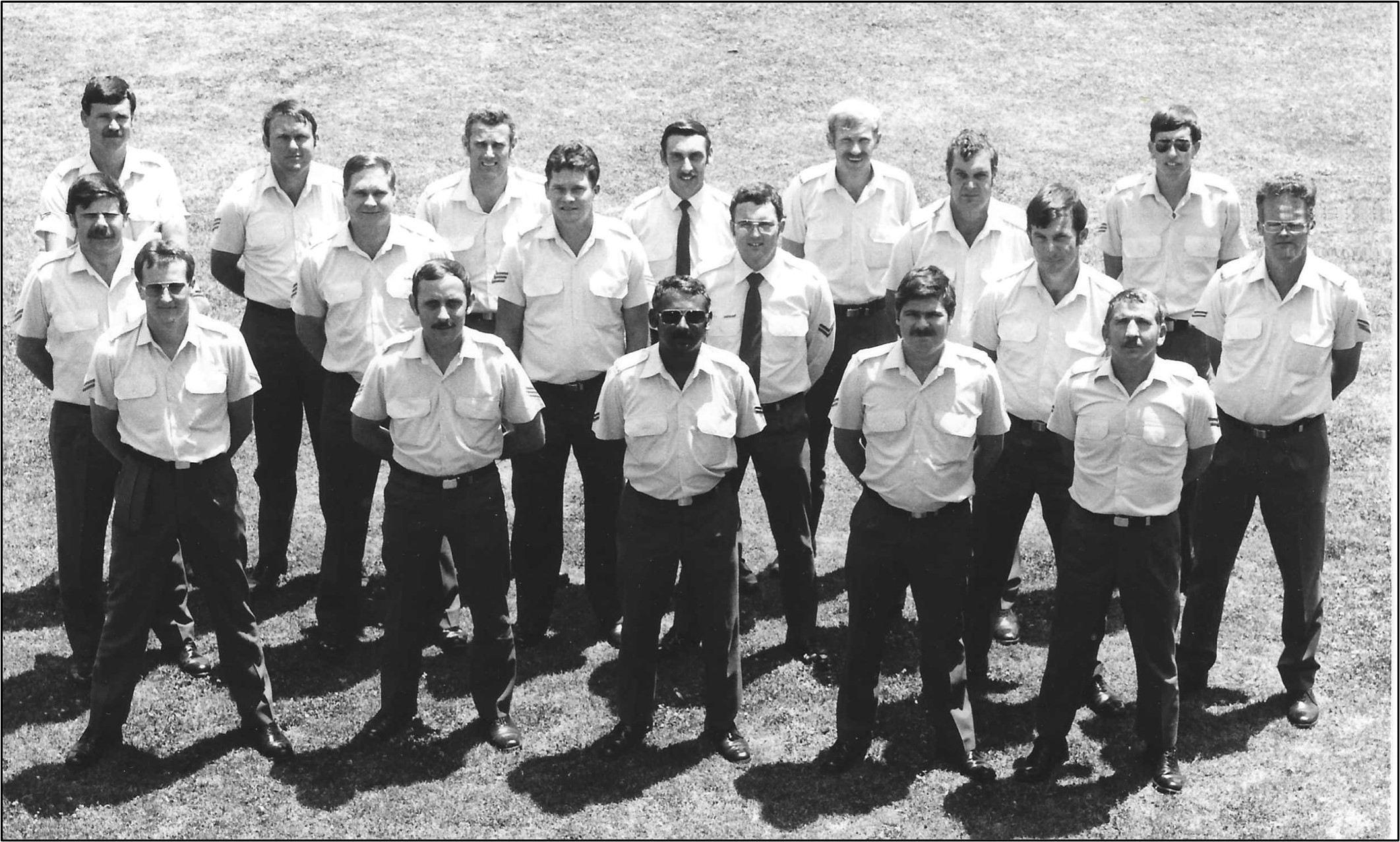
Sorry – no names.
"MAYDAY, MAYDAY, MAYDAY,
We forget who sent us this!
"I was posted to Base Squadron, RAAF Williamtown in May 1960. Trained as a Radio Technician 'Air', this was unusual, as the Base Squadron used 'Ground' Technicians: There were large transmitters, masses of receivers, navigation aids, ground control radar, and an 02 type Crash Boat. To keep me employed I was given responsibility for the Control Tower maintenance, together with a weekly service on the crash boat. This was a learning curve for me. The boat was OK as it was fitted with aircraft type radios.
September 1960, a Staff Officer Inspection was to take place at Williamtown. Squadron Leader Ralph conducting the communications aspects. The Control Tower, (constructed about 1940, of tubular steel frame, perched 30 feet up was accessed via external vertical ladder, a 12 x 12 ft room sat on top) was next to be inspected. Corporal, what does this cable control?' ' I don't know Sir, there are old cables every-where, probably left over from the war.' 'Get your pliers and cut it out.' Nothing happened, all system still worked. 'Now this other cable.' Cut – oops, absolute silence, every-thing was off the air, the 40 pair cable worked everything. (The "Pie Cart" Mobile Emergency Control vehicle was activated. Jump to it and reconnect the cable,' was the next order. Impossible!!! there was no spare cable and some would have to come from stores. An hour later all was messily repaired.
'This weekend, you and two others will completely rewire the Tower removing any unnecessary wires,' he announced. So that is how Jack, Ted and myself spent Friday till 11 pm, Saturday till 11 pm, and about 2.47 pm when the above fateful words were uttered. They were heard in the Williamtown "Pie Cart", by Air Commodore Pierce flying a Meteor at Richmond; and by a Hercules in bound from Wellington to Richmond. The Williamtown Air Controller alerted us three over the inter-comm, and we found a sequence of events as follows:-
Max was wiring a microphone into circuit. Ted had accidentally operated the transmit button, Jack was connecting the remote transmitter station control lines. The Australia wide Search and Rescue alarm was activated by Richmond Controller, setting off the very loud Claxton every where. The Williamtown Controller sent "Ops Immediate Signals" cancelling the" false.alert." Statements were taken and entered in the Log Book, time 3.05 pm. The subsequent Court of Enquiry resulted me being given a slap across the back of the hand, Ted was admonished and Jack was given a reprimand. The next promotion list we were all promoted, Jack to Warrant Officer, Ted to Flight Sergeant, and me to Sergeant.
Years later, I learned the Richmond Duty Controlled who had activated the alert had lost seniority for not carrying out the procedures and for not sending signals notifying the receipt of the MAYDAY call and not cancelling the Claxton alarm. "
Bill.
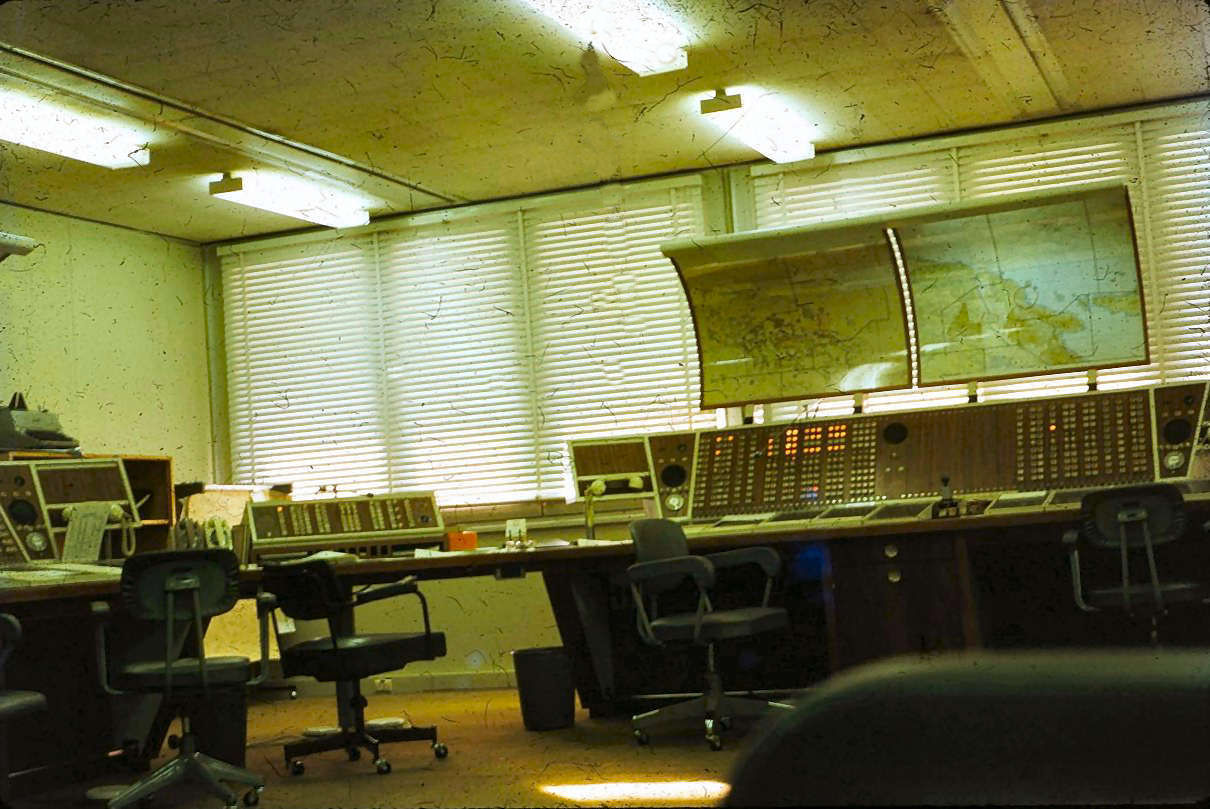
I remember something similar – it occurred while I was working a circuit in Madang PNG (about 1975). Back then there was a helicopter pilot named Bill who lived in Australia but who, every now and then, come up to PNG to fly (I think) a Bell 47. He had a very distinct accent and as we used a very congested HF frequency (5666KHz) which was shared with Moresby and Wewak, everyone knew when Bill was flying. Bill would call his departure details which would be acknowledged by the FIA in which he was flying but other stations would then usually say “G’day Bill” to which Bill would reply “G’day, G’day, G’day”. This went on for ages, every morning Bill called his departure details, someone would say “G’day Bill”, and Bill of course would reply, on HF, “G’day, G’day, G’day”
Independence was coming or had just occurred and we were in the process of training the local PNG people to eventually take over Airways Ops. On one particular day, when Bill responded with his usual “G’day, G’day, G’day” a local trainee in Moresby though he’d heard “Mayday, Mayday, Mayday” and immediately declared a Distress Phase.
Unfortunately he didn’t get the aircraft’s call-sign nor its position so the region had a Distress Phase but nothing else. All Airways Ops units made contact with their active strips, someone pulled and checked the tape and eventually it was realised that no-one was missing and the Phase was cancelled.
It was strongly suggested we didn’t say hello to Bill after that. tb
5 Sqn.
5 Squadron was first formed in England in 1917, as a training squadron for the Australian Flying Corps (AFC). After the First World War the squadron was reformed as a fleet cooperation squadron, working with the RAN and flying amphibious aircraft. In January 1941, 5 Squadron became an army cooperation squadron, serving on Bougainville at the end of the war. On 4 May 1964 the squadron was reformed at RAAF Base Fairbairn, near Canberra, with four new Bell UH-1B Iroquois "Huey", helicopters. A month later, in June, the squadron moved to RAAF Base Butterworth, Malaysia.
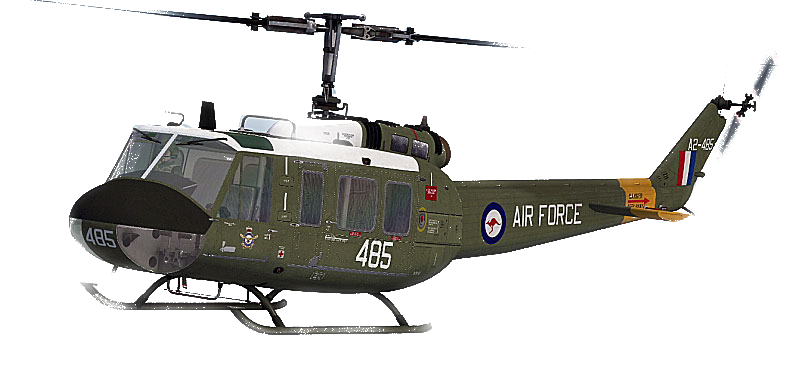
Although the Malayan Emergency was over, Indonesia hostility towards Malaysia continued. As the tension escalated, the British and Malaysian governments repeatedly requested that Australian troops be deployed to Borneo. These requests were refused but Australia did agree for its troops to help defend of the Malayan peninsula. The 3rd Battalion, Royal Australian Regiment (3RAR), was deployed to Malaysia in July 1963, as part of the Far East Strategic Reserve. In April 1964 the Australian government announced it would also send a field engineering squadron for duty in east Malaysia, while a light anti-aircraft battery and 5 Squadron's four Iroquois helicopters, later increased to six helicopters, would be based at Butterworth. The RAAF would also routinely fly troops and supplies between Malaya and Borneo. Two RAN coastal minesweepers would help patrol the waters around Borneo. 5 Squadron was to operate along the Thai border region.
During late June and early July 5 Squadron pilots began flying familiarisation exercises in the jungle areas of north-east and south-east Ipoh, where they were assisted by members of 10 Squadron, Royal Air Force (RAF). On 7 July several airmen were flown to Vung Tau, South Vietnam, to study American methods of helicopter maintenance. A detachment from the squadron also took part in a joint exercise with 28th Commonwealth Infantry Brigade and the RAF.
On 8 September a small party of Australian soldiers were reported missing close to the Thai border and the squadron helped in the search-and-rescue operation. The missing soldiers and a ground rescue team were located on 10 September and they were winched out of the jungle three days later.
During October the squadron flew 420 sorties, mostly supporting 3RAR, transporting 250 troops to and from landing zones. Several sorties were also carried out in cooperation with Senio Praak troops, and the Special Branch Malayan Police Force. On 18 November a helicopter from the squadron was detached to RAF Seletar to support the Singapore Regiment against Indonesian infiltrators in the East Johore area.
Throughout January 1965 the squadron transported both Malaysian and Australian personnel, and also carried out reconnaissance sorties, communication flights, and medical evacuations. Similarly, in April and May the squadron flew a number of missions in support of the 1st Malaysian Rangers, the Senio Praak troops, and Malayan special police branch.
From July 1964 to 5 April 1966, 5 Squadron moved 21,638 passengers and 760,653 pounds of freight, and carried out 727 medical evacuations.
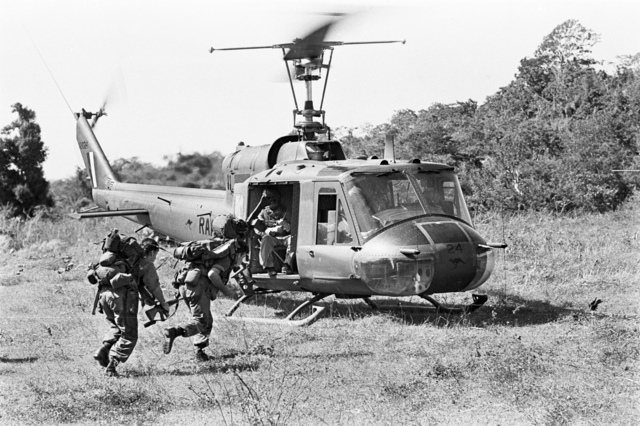
Confrontation came to an end in August 1966, by which time the main focus of Australia's military commitment was in Vietnam. It was thought that 5 Squadron would be sent to Vietnam to support the 1st Australian Task Force (1ATF) but 9 Squadron was deployed instead.
Confusingly, on 12 April, 1966, 5 Squadron, still at Butterworth, became 5 Squadron Detachment "C", while 9 Squadron, at Fairbairn, was renumbered 5 Squadron. Having non-existed for less than a day, 9 Squadron was reformed on 13 April, with eight Iroquois from 5 Squadron. This allowed 9 Squadron to be sent to Vietnam, while 5 Squadron was based at Fairbairn. The two squadrons were closely associated for the rest of the war, both in training and service in Vietnam.
5 Squadron Detachment "C" remained at Butterworth and continued transporting personnel and equipment, and undertaking sorties in support of Malaysian forces, until it disbanded on 23 May 1966.
Upon its return to Australia, No. 9 Squadron was based at RAAF Base Amberley, where it continued to provide airlift to the Australian Army and search and rescue for the civilian community. In February 1988, it began to re-equip with S-70A Black Hawk helicopters, but after conversion training had been completed, the unit moved to Townsville where it disbanded on 14 February 1989. The squadron's personnel and helicopters were then used to form the nucleus of the Army's 5th Aviation Regiment.
From July 1976 to August 1979, 5 Sqn was involved in a peace keeping role. It was attached to UNEF II (United Nations Emergency Force), based at Ismalia, Sinai. The role of the UNEF was to supervise the Yom Kippur War ceasefire between Egypt and Israel.
The AWM has video of personnel from 5 Sqn at work and play in the Sinai, you can see it by clicking the pic below. You'll probably recognise a few faces.
Later, in 1984, 5 Sqn acquired AS350B Squirrel utility helicopters and along with the Iroquois UH1-Hs, it continued the training role and Army support, in addition to providing aid to the civil community in times of natural disaster
5 Squadron remained at Fairbairn until it disbanded on 9 December 1989.
No 34 Air Movements' Course, 1969.
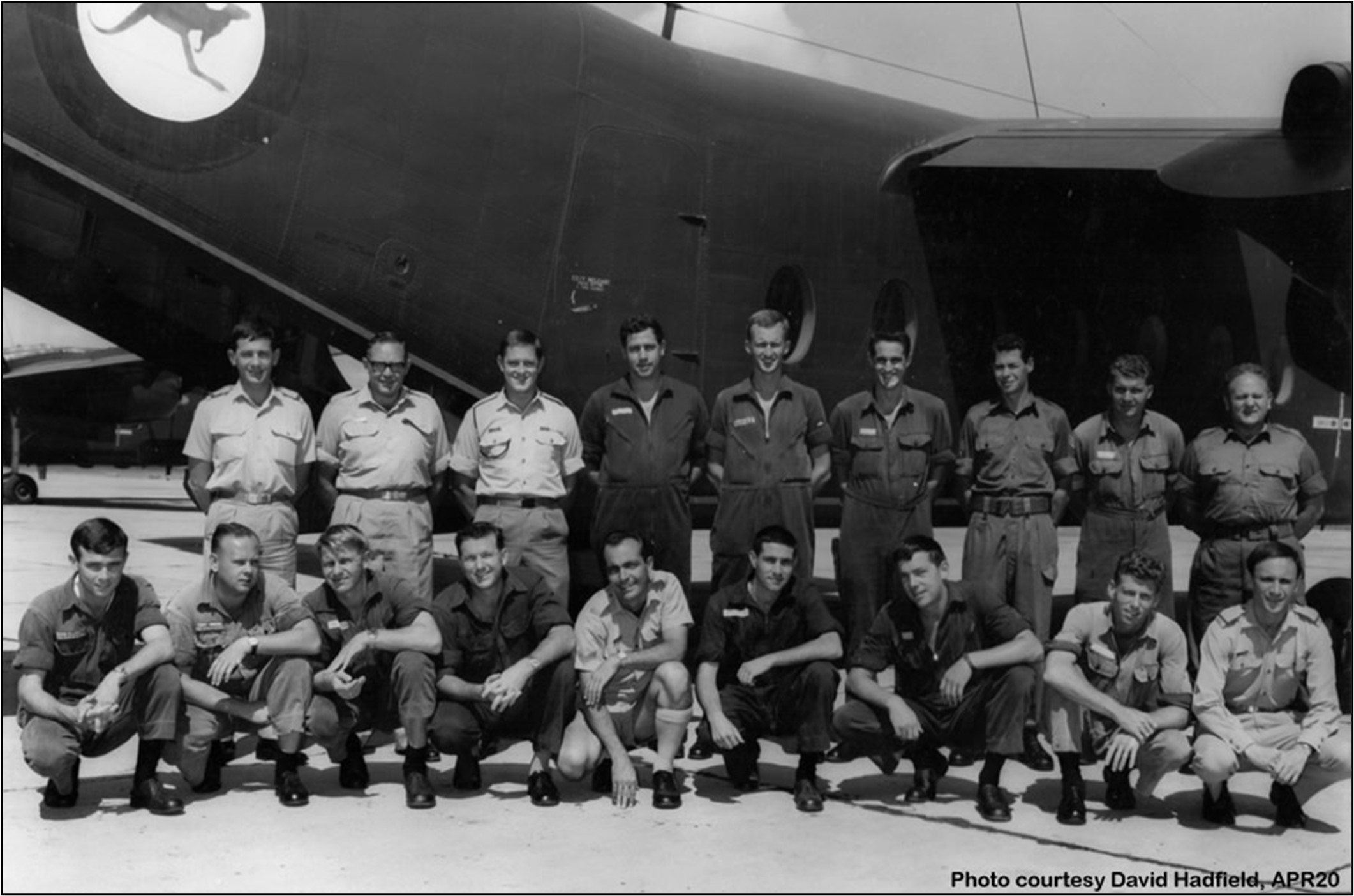
Standing L-R: Don’t know, Don’t know, Don't know, Col Knudson, David Hadfield, Col Bruce, Don’t know, Tom Mills, Don’t know.
Kneeling L-R: Doug Elliott, Terry Manning, Bill De Boer, Don’t know, Barry Stringfellow, Don’t know, Gary Power, Nev Church, Don’t know.
All potential Loadmasters, both Caribou and Hercules, had to do the course as a requirement to become a Loadie.
What is a Loadmaster?
As a member of the Australian Defence Force, you may think you know what a loadmaster does; you may even have observed one working on a flight while you were a passenger. The reality, however, is that most of these observations are made when the loadmaster is conducting the most benign of their responsibilities – monitoring aircraft systems and ensuring the passengers are as comfortable as possible.
An Air Force loadmaster is a crew member on a tactical transport aircraft responsible for the calculation of aircraft weight and balance, loading/unloading, the rigging and dispatching of airdrop loads, and the safety and security of passengers and cargo. While this neatly summarises the role, it does not adequately express the responsibilities and demands of this unique occupation – it’s just too elementary.
Air Force loadmasters are employed on C-130J-30 Hercules, C-17A Globemaster and C-27J Spartan aircraft operated by Air Mobility Group (AMG). The crews that operate these aircraft conduct a very broad range of mission skills and work in some the most hazardous environments of anyone employed in aviation.
Defining the challenges of being a loadmaster is difficult. While aptitude is important, in my experience it’s not the catalyst for what makes a great loadmaster. If you can understand some basic mathematical formulas, extrapolate data from a graph and can memorise a bunch of numbers, you most likely possess the required aptitude. This baseline aptitude is usually enough to demonstrate your ‘loadmaster prowess’ in a controlled environment, such as at a National Support Base with an established Air Movements section, but it will not be enough once you enter the loadmaster’s natural habitat – disarray.
Disarray can be described as a ‘state of disorganisation’. It is the loadmaster’s home ground, and it is where the best of us shine! It is also where many find themselves out of their depth wondering why they chose such a career.
While the aircraft captain remains firmly in command, it is the loadmaster who assumes control of coordinating activities on the ground. Loadmasters operate internationally under strict time pressures, and at times with limited support. If you have ever been involved in a Humanitarian Assistance and Disaster Relief (HADR) mission, you can be certain that AMG aircraft have been there for days, if not weeks before the cavalry arrived. It is these missions where things can stretch beyond disarray and become chaos! While chaos is rare, disarray is just another day in the office, and how a loadmaster copes in this environment is a defining factor of their operational effectiveness.
Disarray typically occurs at remote international airfields, where the true nature of the situation is not known until arrival. The forklift you were expecting turns out to be too small, the driver doesn’t speak English, nobody has inspected the cargo, the pallets are not prepared and the generator that needs to be drained of fuel isn’t.
Once the situation is understood, the loadmaster glances down at their watch, taking a mental note – ‘50 minutes till planned departure time, no sweat’.
Meanwhile, under a shady tree sipping their orange juice, the aircraft captain watches on in awe (kidding!) as disarray becomes a slick series of coordinated activities which create order. Converting disarray into order relies on a loadmaster’s ability to forge relationships and coordinate individuals, groups, or agencies towards a common goal. Depending on the nature of the mission, loadmasters liaise directly with world leaders, senior military officers, regular forces, special forces, government officials, foreign defence personnel, emergency services, aid workers, displaced persons and, of course, the remainder of the crew. These broad range of interactions require a heightened level of social mastery and situational leadership.
Once the loadmaster has arranged customs, quarantine, inspected the cargo, prepared/accepted any dangerous goods, briefed the passengers, conducted baggage inspections, built the pallets, weighed everything, raised the paperwork, loaded the aircraft, secured the load, ensured structural limitations are not exceeded (there are many) and calculated the aircraft weight and balance, it’s now time to brief the captain and prepare for departure.
The loadmaster takes another quick glance at their watch as sweat drips down their face onto the paperwork – ‘5 minutes till engine start’.
As the aircraft engines roar to life and the loadmaster climbs aboard, it would be incorrect to assume that this is where they can finally relax. Loadmasters are in constant communication with the pilots, conducting various in-flight procedures, responding to checklists, monitoring aircraft systems/radios, de-coding messages and must remain ready to respond to any type of emergency.
If you have travelled on an AMG aircraft and observed a loadmaster not looking all that busy, be grateful, because if they were there is a good chance something has gone drastically wrong. Loadmasters are trained to deal with a range of in-flight emergencies including, but not limited to, hydraulic failures, fire, smoke and fumes and the jettison of cargo. If necessary, loadmasters can quite literally pull panels off aircraft in-flight, access the landing gear and lower it manually. Some missions require the airdrop of cargo and/or paratroopers. While the drop itself can take just seconds, the planning, preparation and rigging is a meticulous and lengthy process with very little room for error. More complex loads can take hours to rig, check and double check! Then, as a crew, pilots and loadmasters work interdependently to deliver these loads onto a very precise location from hundreds, if not thousands of feet in the air. A great example of this is the C-17A crew who airdropped supplies to the Mawson Research Centre in Antarctica from 1300 feet – impressive!
While being a loadmaster does not define who you are, many would describe it as a lifestyle and not simply a job. Being a loadmaster requires an immense amount of personal dedication and sacrifice. In just my final year of flying, I accumulated approximately 600 C-130J-30 flying hours, participated in two HADR missions, and deployed to the Middle East Region. These three tasks alone totalled more than six months away from home.
Many loadmasters have walked out the door for a planned three-day task, promising to be home for that birthday or anniversary, only to have returned three weeks later having missed another milestone event.
Loadmasters are at times exposed to hard realities, such as the aero-medical evacuations following the 2002 Bali bombings. The blast killed 202 people (88 Australians) and left a further 209 injured. A total of five C-130 aircraft were used to fly out 66 casualties for treatment in Australia. The injuries were horrific and the scene confronting. In 2004 disaster struck shortly after departure from Baghdad; a small calibre round impacted the aircraft instantly killing an American contractor. The damaged panel now forms part of the C-130J-30 fuselage trainer (cargo compartment simulator) at RAAF Base Richmond. It serves as a constant reminder to current and future generations of the very real risk associated with this occupation.
Finally, one of the most difficult tasks a loadmaster can ever do is the repatriation of an Australian soldier, sailor or aviator. In just one four-month deployment, I carried out six of these. I have never felt a greater sense of responsibility.
While the focus of this article has been on the loadmaster, it would be irresponsible of me to not mention the amazing pilots that fly these aircraft. Readers will have noticed that I took an opportunity to poke fun at the aircraft captain, sipping an orange juice under the shade of a tree (still funny). However, this is simply reflective of the humour shared between pilot and loadmaster. AMG pilots fly the crew in and out of some of the most dangerous airfields in the world, utilising night vision equipment at extremely low altitudes. I often sat in the flight deck watching them do what they do best, and found myself amazed at how they made such a complex task appear simple. I genuinely have nothing but immense respect for these very talented professionals. The relationship between an aircraft captain and a loadmaster is one that is built on trust. This doesn’t happen overnight, but once you have it, it can remain enduring for an entire career.
Personally, I believe that being a loadmaster is the greatest and most rewarding job in the world. One of my earliest mentors once said to me ‘we are all human and we all have bad days, but loadmasters are not allowed to have bad days’. I have used this simple piece of advice across my career.
Ryan Wilson.
Caribou Loadmaster’s Course, 1969
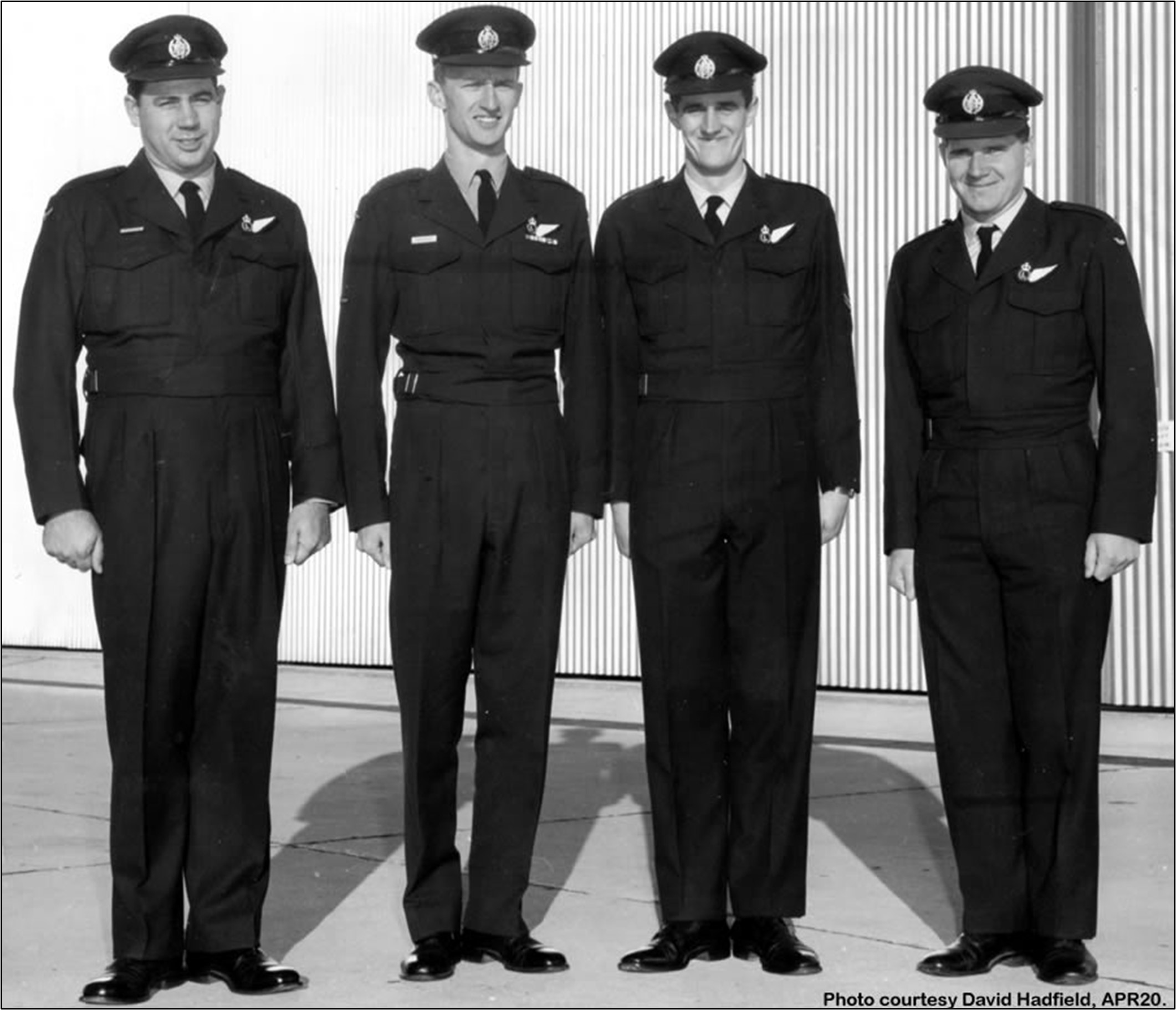
L-R: Col Knudson, David Hadfield, Col Bruce, Tom Mills.
A lawyer asked, "Paddy, why is it that whenever you ask an Irishman a question, he answers with another question?”
"Who told you that?" asked Paddy.
F-111 troops.
(We’re short of a few names, if you can help, along with a when, please do)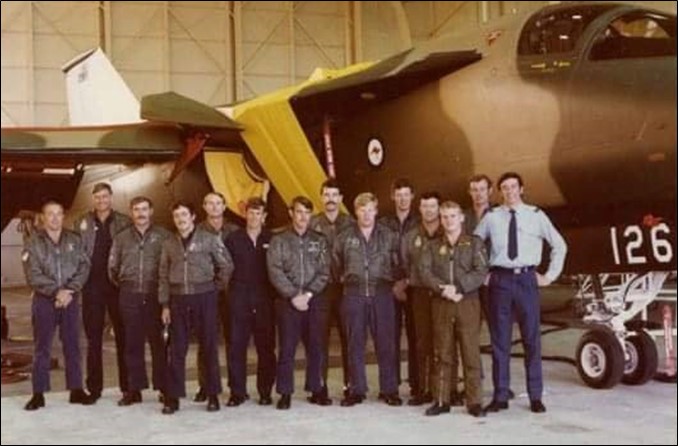
L-R: ? Barry, ? Gray, Ross Flewell-Smith, Wally Bellamy, John “Boy” Boyle, Bob Howard, Don’t know, Kev Purkis, Marty Chalk, Kev Thomson, Ian Hunt, Terry Farquharson, “Shorty” Jordan, Hans Buikstra, Norm Watt.
Why do leaves fall off trees?

When it comes to autumn, the first thing many people think of is leaves. The red, golden, and orange-hued foliage that coats trees and eventually falls to the ground is a must-see sight for many. But why exactly does it happen?
As it turns out, trees are pretty smart, and falling leaves are a self-preservative method during the colder months. Deciduous trees are typically the ones you’ll see lose their leaves during autumn. This is because those don’t tend to have waxes and resins to protect them (like other types such as magnolias). During winter, those more fragile leaves would be more susceptible to damage because as water freezes, like it would be likely to do in winter, it expands causing damage to the leaves and making them incapable of photosynthesis.
Instead of keeping those leaves around, they’re dropped in advance. Plus, shedding those leaves helps ensure the tree’s physical integrity is intact. Snow caught on fragile leaves and windy conditions could bring added weight and stress to branches ultimately causing damage.
How does a tree do this, though? It’s actually a hormonal change that occurs when days shorten and temperatures fall. When those hormones kick in, an abscission process starts and chlorophyll production stops. Here, vessels carrying water and sugar close off and a new cell layer begins to grow and as it does, the leaves are steadily loosened from the tree and fall.
A man phoned the maternity ward at the hospital. "Quick!" he said. "Send an ambulance, my wife is going to have a baby!”
"Tell me, is this her first baby?" the intern asked. "No, this is her husband, Kevin, speaking.”
Final flight farewells trusted friend.
Newcastle Herald, 1 July 1995
A piece of military aviation history flew off into the sunset on the 30th June 1995 as RAAF Williamtown’s last Winjeel aircraft were decommissioned. The aircraft used by 76 Sqn mainly for pilot and forward air command training were replaced by the PV9 trainer aircraft.
The Winjeel has been a steady work horse over all the years and many senior people in the Air Force trained on the Winjeel and have an affection for it. The Winjeels have been taken out of service because of their high running costs and maintenance costs. The PC9 is a higher performance aircraft, capable of travelling twice the speed and higher than the Winjeel with less maintenance.
Never used in combat, the main purpose of the Winjeel was top provide air training under battle conditions. During the Vietnam war, pilots who were trained in Winjeels had supported the US forces in forward air control.
The first Winjeels took to the skies in 1955 and 62 of the two seater aircraft have been used to prepare young pilots for all sorts of battle conditions. It was said that the Winjeel was like the “Rolls Royce or Bentley of the skies”, it was said to handle great, fly great and sound great.
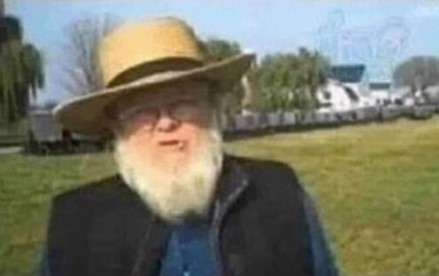
Be careful when you shop online.
We ordered a German shepherd and now this bloke lives with us.
Back Go to page: 1 2 3 4 5 6 7 8 9 10 11 12 13 14 15 16 17 18 19 20 Forward